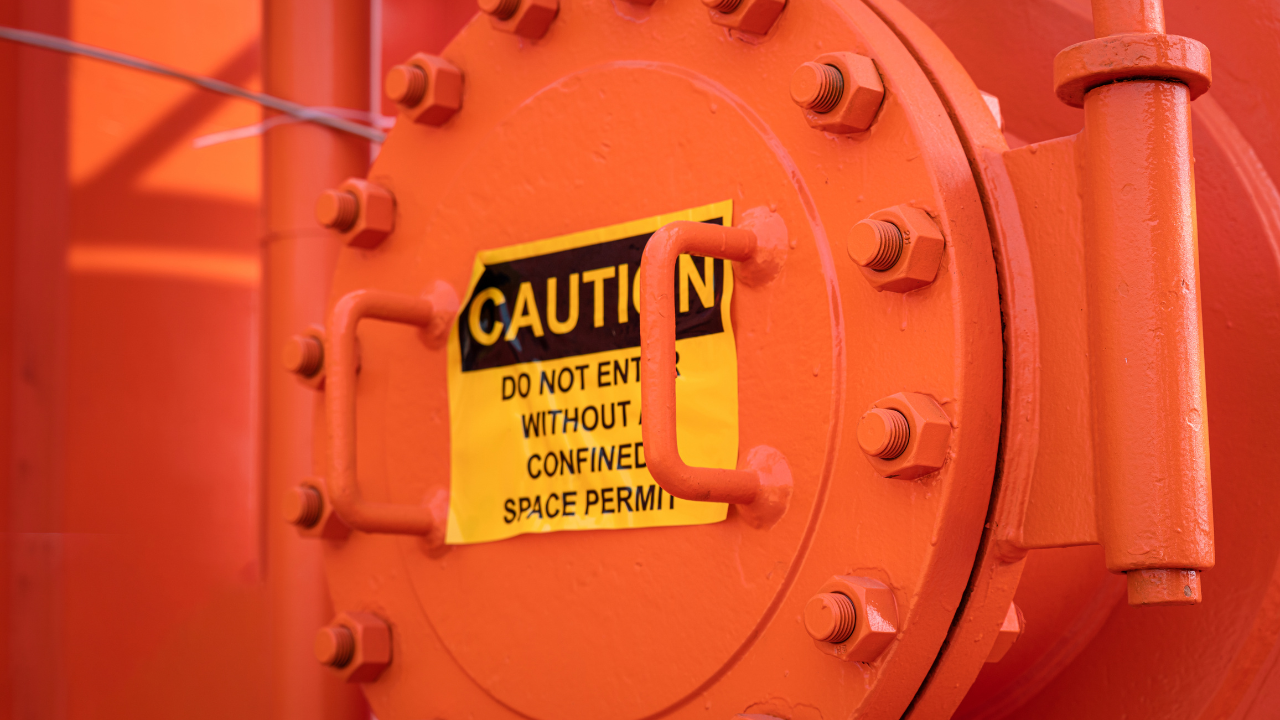Electrical Hazards
Cooper Bussmann, Bussmann
3 Basic Electrical Hazards
There are three basic electrical hazards that cause injury and death: shock, arc-flash, and arc-blast.
Following these safety principles can provide a safer work environment.
Shock currents can pass through the human body’s nervous or vascular systems, and across the surface of the body. The current required to light a 71/2 W, 120 V lamp, passing through the chest, can cause death. Of those killed while working on voltages below 600 V, half were intentionally working on “hot” energized equipment. Most electrocutions can be avoided with proper training, planning, job preparation, procedures, and equipment.
Arc-flash (extremely high temperature conductive plasma and gases resulting from an arc fault incident). As many as 80 percent of all electrical injuries are burns resulting from an arc-flash contact and ignition of flammable clothing. Arc temperatures can reach 35,000 F four times hotter than the sun’s surface. Arc-flash can cause second and third degree burns.
Arc-blast (pressure wave caused by the rapid expansion of gases and conducting material with high flying molten materials and shrapnel). An arc-blast may result in a violent explosion of circuit components and thrown shrapnel. The blast can destroy structures, and knock workers from ladders or across a room. The blast can rupture eardrums and collapse lungs.
Training, planning, and writing procedures
Provide training. Obviously, an important aspect of electrical safety is training. To be qualified, workers need training on the tasks and procedures (such as lockout/tagout procedures) that are essential to conducting their work in a safe manner.
Plan every job. Take the time to prepare a work plan that considers all possible eventualities. Before starting the job, think about each step and try to visualize the potential for hazards.
Anticipate unexpected results. When thinking about a job, break each task into small steps. Understand that plans can change, so be ready to modify the plan. Make sure that everyone involved in the job is working according to the same plan. Whenever work is required near an electrical hazard, a written plan is needed to outline the scope of the job.
Use procedures as tools. Procedures are the best way to help you prepare, execute, and complete a job. Like any tools, make sure procedures are maintained.
Identify the hazard. After your work plan is complete, review each step. Consider that the equipment might be perfectly safe under normal conditions and very unsafe when systems are not working properly. Also consider potential hazards that may be unrelated to electrical energy.
Assess people’s abilities. Any person assigned to tasks associated with electrical energy must be qualified and trained for the job at hand. He or she must be able to identify electrical hazards, avoid exposure to those hazards, and understand the potential results of all action taken.
Providing an electrically safe work condition
Use the right tool for the job. Use the appropriate tools for the job at hand, keep them accessible and in good working condition. Using a screwdriver for a job that requires a fuse puller is an invitation to an accident.
Isolate the equipment. The best way to avoid an accident is to reduce exposure to the hazards present. Keep doors closed. Keep barricades in place. Install temporary voltage-rated blankets covering exposed live parts. Put the equipment in a safe working condition prior to performing maintenance. Lock out the disconnect.
Protect the person. Use the proper personal protection equipment for the job. This may include safety glasses or goggles, head protection, voltage-rated gloves, safety belts and harnesses, or flame-resistant clothing.
Minimize the hazard. If it is impossible to establish an electrically safe work environment, be sure to shut down every possible energy source. Understand that sometimes a de-energized circuit can become re-energized and do something to lessen the risk.
Audit these principles. A principle is something you believe in enough to be willing to do. Review these principles often; add to them as needed.
Lockout/Tagout
The Lockout/Tagout Standard was created to help reduce the death and injury rate caused by the unexpected energization or start-up of machines or the release of stored energy. Normal production operations, cords and plugs under exclusive control, and hot tap operations are not covered. This standard applies to energy sources such as electrical, mechanical, hydraulic, chemical, nuclear, and thermal.
Procedures for applying the lock/tag:
- Before the shutdown, know the unit and power sources
- Power down the equipment
- Isolate the power source(s)
- Apply the lock and/or tag
- Use proper techniques, personal protective equipment, and test measuring devices to verify that the electrical circuit is de-energized
- Release residual energy
- Try to power up
Procedure for removing the lock/tag:
- Inspect machine and/or equipment
- Give notification to personnel
- Remove the lockout/tagout device
National Fire Protection Association Standard NFPA 70E
There are a number of important electrical industry consensus standards that have indirect or direct impact on human safety. NFPA 70E, the “Standard for Electrical Requirements for Employee Workplaces,” is one of the most important. This standard focuses on protecting people and identifies requirements that are considered necessary to provide a workplace that is generally free from electrical hazards.
NFPA 70E suggests that:
- Electrical hazards include shock and arc-flash.
- The best way to avoid injury or incident is to establish an electrically safe work condition prior to beginning work.
- Procedures and training are extremely important if injury is to be avoided.
- Shock and flash protection boundaries determined and adhered to.
- NFPA 70E identifies the requirements for enhanced personal safety. It is an extremely important national consensus standard and must be considered to define the requirements for an overall electrical safety program.
IP20 (Finger-Safe) ratings
The NFPA 70E requires that a guard be used to prevent access to voltages above 50 V. Guarding and the installation of insulating barriers must be completed if work is to be performed while the equipment is energized.
IP20 is often referred to as the “Finger-Safe” rating for electrical components such as a disconnect fuse holder. It refers to the fact that a probe, the approximate size of a finger, must not be able to access or make contact with hazardous, energized parts. Live parts that could easily be touched while resetting, adjusting, or replacing nearby components must be provided with protection against direct contact to at least the IP20 rating.
Electrical hazard heat facts
The heat generated from electrical hazards kills and maims. Consider the following:
- No material on earth can withstand temperatures of 35,000 F without vaporizing.
- Copper expands to 67,000 times its original volume when vaporized and can be inhaled into human lungs with debilitating or fatal results.
- Skin temperature of 200 F for more than one-tenth of a second will cause incurable, third degree burns-consider the damage to human skin exposed to the heat resulting from an arc-flash.
- Serious or fatal burns can occur at distances of more than 10 feet from the arc-flash source.
Designing an electrical system – for safety
It is not enough to focus just on work practices and the worker. The first step in providing a safer work place is designing and retrofitting the electrical system with specific safeguards. There are a number of things that can be implemented including the following:
Isolate the circuit. Electrical systems must be designed to support preventive maintenance, with easy access to the equipment. Designers need to make it easy to isolate equipment for repair with a disconnecting means that provides for proper implementation of Lockout/Tagout procedures. Install disconnects with permanent lockout provisions within sight of all motors and driven machinery.
Cover exposed components. Equipment must be “Finger-Safe” IP20 where possible to avoid potential contact with energized conductors. It is not always possible to de-energize the equipment before working on it. Specify electrical components that are IP20 “Finger-Safe.”
Limit the energy. Circuits should also be designed to limit the available arc-flash energy. The use of current limiting overcurrent devices can help to reduce the flash energy. This will provide for improved protection for both equipment and employees. Use current-limiting fuses or current-limiting circuit breakers.
Retrofit the fuses. If the electrical system is an existing fusible system, upgrade the fuses to the most current-limiting fuse types. This measure provides a greater degree of current-limitation if an arc-flash incident occurs.
Electrical hazard victim first aid
As part of your safety program know the name, location, and phone number of the nearest burn center medical facility.
- Have a victim in burning clothing drop and roll to extinguish flames.
- Cool the burn with water or saline for a few minutes or until the skin returns to normal temperature.
- Remove constricting items such as shoes, belts, jewelry, and tight collars.
- Elevate burned limbs to reduce swelling.
- Handle the victim with care as he may have broken bones or spinal injuries.
- Treat for shock. Maintain body temperature; do not give anything by mouth. Administer high concentrations of oxygen, if available.
- Keep the victim warm and as comfortable as possible during transport to the medical facility. Cover victims with clean, dry sheets or blankets. Wounds should be covered with sterile dressings or clean sheets.
- Have someone familiar with the incident immediately inform the medical staff of vital details of the incident. This helps the medical staff diagnose injuries more quickly and more accurately.
According to OSHA, electrical hazards are a leading cause of workplace fire risk. Click here to learn more about fire prevention and emergency action plans.
Is it critical to understand the National Fire Prevention Association’s Hazard Rating Diamond. Your safety and the safety of others may depend on your knowledge of the NFPA label.
Cooper Bussmann, Bussmann
Related Articles

All About Eye Protection

Arc Flash/Arc Blast Review with Safety Suggestions for Design & Maintenance

CSA Launches First Confined Spaces Standard in Canada

Do You Need NFPA 70E?

Eye Injuries are a Serious Threat to American Workers




